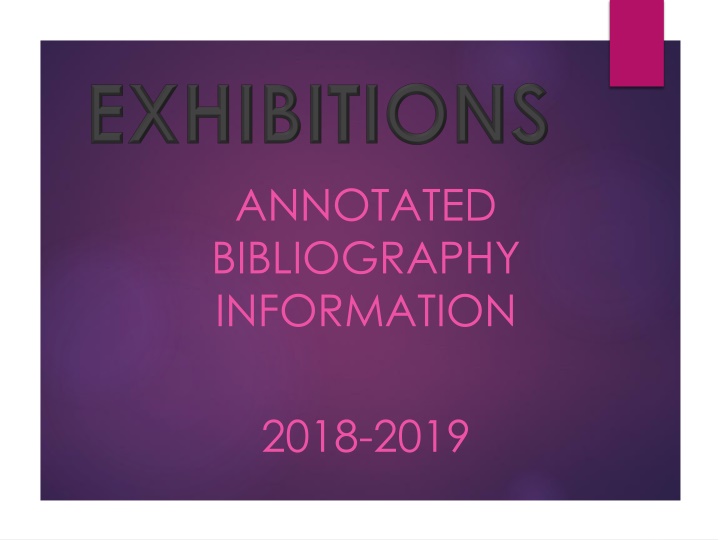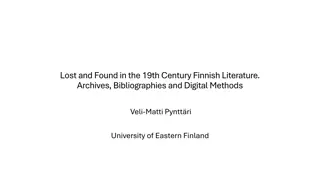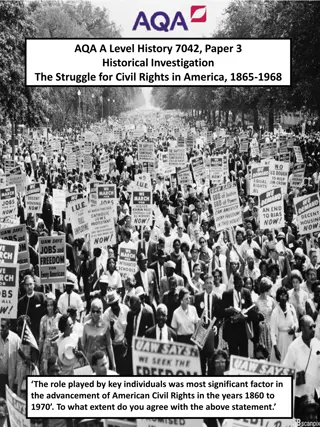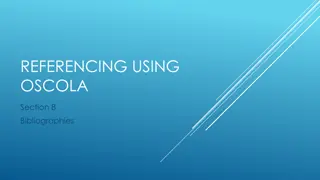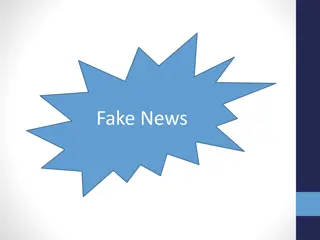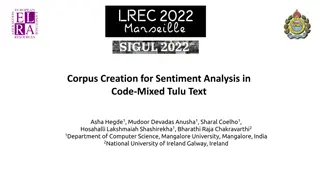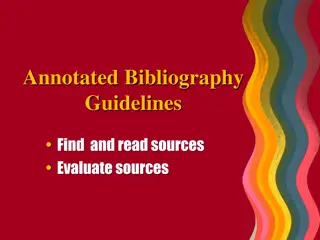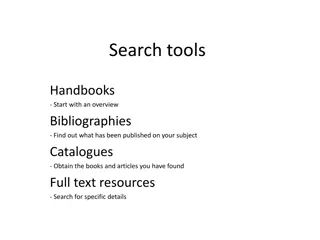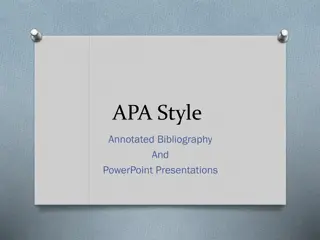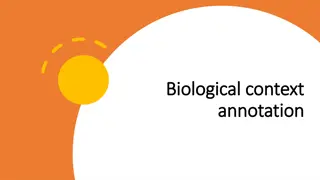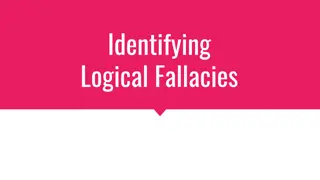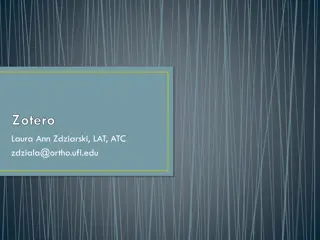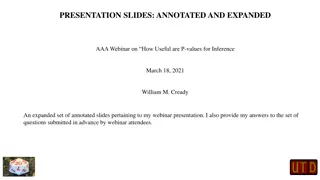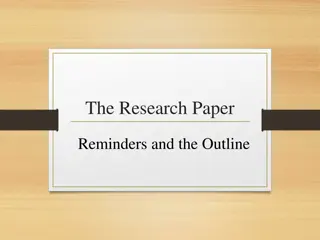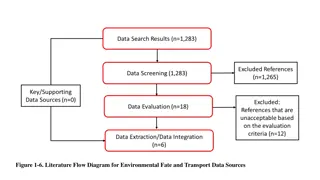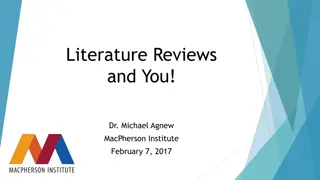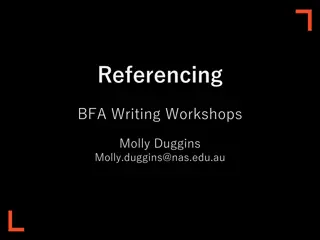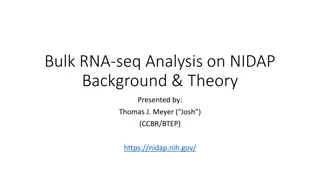Annotated Bibliographies: A Comprehensive Guide
An annotated bibliography is a curated list of citations to various sources followed by descriptive and evaluative paragraphs, providing insight into the relevance, accuracy, and quality of each source. It serves as a valuable tool for researchers to organize, evaluate, and document their sources effectively.
Download Presentation

Please find below an Image/Link to download the presentation.
The content on the website is provided AS IS for your information and personal use only. It may not be sold, licensed, or shared on other websites without obtaining consent from the author.If you encounter any issues during the download, it is possible that the publisher has removed the file from their server.
You are allowed to download the files provided on this website for personal or commercial use, subject to the condition that they are used lawfully. All files are the property of their respective owners.
The content on the website is provided AS IS for your information and personal use only. It may not be sold, licensed, or shared on other websites without obtaining consent from the author.
E N D
Presentation Transcript
ANNOTATED BIBLIOGRAPHY INFORMATION 2018-2019
What is an Annotated Bibliography? An annotated bibliography is a list of citations to books, articles, and documents. Each citation is followed by a brief descriptive and evaluative paragraph, the annotation. The purpose of the annotation is to inform the reader of the relevance, accuracy, and quality of the sources cited (guides.library.cornell.edu).
Annotated Bibliography Video (double click to access)
Sample Citation - Book Holland, Suzanne. The Human Embryonic Stem Cell Debate: Science, Ethics, and Public Policy. Boston: MIT Press, 2001. Print. MLA format Double-spaced Titles are italicized
Sample Citation: Web Articles Editor, author, or compiler name (if available). Article Name. Name of Site. Date of last update. Medium of publication. Date of access. Example: Waite, Linda J. "Nonfamily Living and the Erosion of Traditional Family Orientations Among Young Adults." American Sociological Review. 02 Mar 2011. Web. 06 Feb 2018. Remember, MLA Rules state that you insert all of the information in the Works Cited entry IF IT S AVAILIBLE. If it s not, do not include it. For example, if there is not a last updated date listed on the site, you do not have to include it in your entry. Plug in anything that s available.
Credible Sources Video (double click to access)
Annotation Section Our annotated bibliographies for Exhibitions will each include ONE paragraph which includes the following 3 elements: 1. Summary 2. Assessment 3. Reflection
1: Summary Summarize: Some annotations merely summarize the source. What are the main arguments? What is the point of this book or article? What topics are covered? If someone asked what this article/book is about, what would you say? The length of your annotations will determine how detailed your summary is. Sentence starters: The main idea of this article is . The topics covered in this article are . The author s point of view in this article is 1. 2. 3.
2: Assessment Assess: After summarizing a source, it may be helpful to evaluate it. Is it a useful source? How does it compare with other sources in your bibliography? Is it credible? Is the information reliable? Is this source biased or objective? What is the goal of this source? Sentence Starters: 1. The author of this piece is/is not credible because 2. The author knows a lot about this topic because . 3. From this piece, the author wants you to .
3: Reflection Reflect: Once you've summarized and assessed a source, you need to ask how it fits into your research. Was this source helpful to you? How does it help you shape your argument? How can you use this source in your research project? Has it changed how you think about your topic? Sentence Starters: 1. This article supports my ideas because .. 2. This article was helpful to me because . 3. This article added to my knowledge about this topic because .
BREAKDOWN by GRADE LEVEL 9th Grade: 3 credible sources 10th Grade: 5 credible sources 11th Grade: 7 credible sources
Lets review the scoring page and the requirements
Annotated Bibliographies are due Thursday March 28th. Don t procrastinate!! Visit this website for resources and a link to this PPT (link on benholtschool.org) https://owl.purdue.edu/owl/general_writing/common_writing_assignme nts/annotated_bibliographies/index.html
